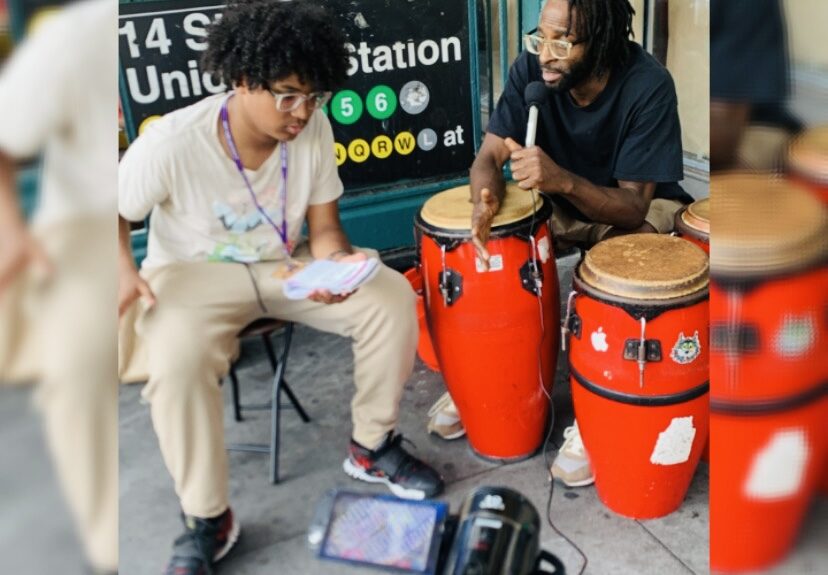Arts & Entertainment Business Featured Articles
Street performers aim to inspire and uplift
Street Performing in NYC
By Anthony Jose Urena
On a patch of concrete in Washington Square Park, Adjua Ajamu lays down his paisley-printed red carpet and, on top of that, a tip jar and a cube-shaped speaker that is connected to his phone. It powers the synthetic music that is the background for his singing.
On a second carpet, black and paisley-printed, he lays his crystals that are in the shape of circles and triangles. He lights his favorite incense, patchouli.
“It got to look good around me, it got to smell good around me, it got to sound good around me,” Ajamu said.
Buskers, also known as street performers, like Adjamu do what they do for money, relying on donations of those who pass them by and enjoy the artistry they offer, whether in public parks, subways platforms or subway trains.
A 2022 New York magazine article suggested that street performers who are really savvy about their business can make anywhere from $800 to $4,000 a month. It also said that most street performers quit after a month because they don’t get enough donations to make it a weekly thing.
Street performers usually make around $35 to $75 a day, according to the NY Style Magazine, which may or may not cover, for example, the cost of renting an apartment in one of the five boroughs. In New York City, an average single-person rental apartment is around $2,950, according to a study made by Rent Own Sell New York.
From Tuesday to Sunday, Adjamu wakes up from his $1,500-a-month apartment in Harlem to take the A train downtown, sit in his favorite spot in Washington Square Park and serenade the locals with the rhythm of the blues.
Yet, it’s not all about the money. That’s according to percussionist Aquoomlewah Willborn, 45, who plays Afro-Cuban beats on the congo. One recent day, on the W-train, he wore a T-shirt with the words “Q house of drums.” He wants passengers to make themselves at home, if you will, while he plays. He wants people to relax, especially after a rough day.
He’s generous like that, said Willborn’s uncle, Otanu Evans, who plays with his nephew on the subway trains: “This is a person who will have $1 in his pocket, and give you 75 cents — that’s him.”
Like Willborn, for Adjua, “People are my main motivation.”
On a recent day, he was tuning his guitar and getting ready to play his next song, “Perfect for it All,” a song he wrote: Keep on changing, keep on evolving … Six-year-old Nigel, gripping his grandmother’s leg, walked over and gave Adjua $2 as payment for the music Adjua was making.
Adjua and Willborn both use Instagram to promote their brand and land gigs.
For Adjua, street performance isn’t just any only job, it’s a way of
Life. “I look at how many people I make happy, at how many people are proud of what I’m doing, and how many people are inspired by me,” he said.
Adjua said he reads the atmosphere and the vibration people are giving off before he decides which song to perform.
Willborn does something similar. “I’ve been told multiple times,” he said, “‘You cured my headache,’” he said.


